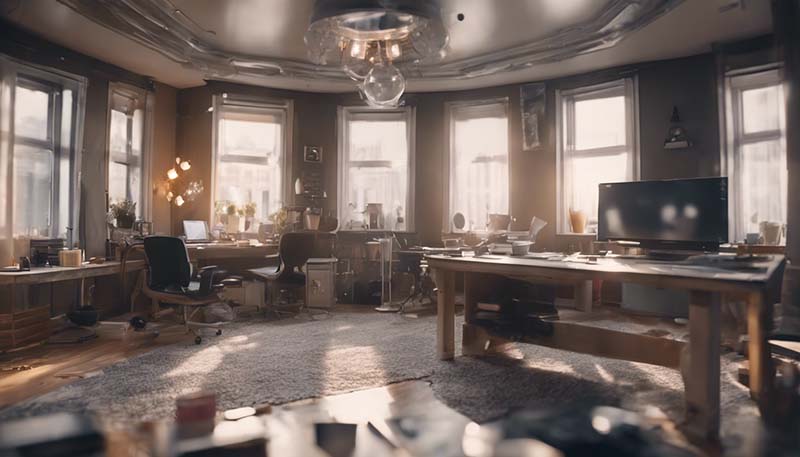From Sketch to Space: The Process of Interior Design
Interior design is a multifaceted profession that involves creativity, technical knowledge, and problem-solving skills. It\'s the art of arranging and designing the interior space of residential or commercial buildings to achieve a healthier and more aesthetically pleasing environment for the people using the space. This article will walk you through the comprehensive process of interior design, from the first sketch to the final realization of a space.
Phase 1: Discovery and Consultation
The initial phase in any interior design project is the discovery phase. This is where the designer meets with the client to understand their needs, preferences, and budget.
**1.1 Client Interview:**
The client interview is crucial. It helps the designer to identify the client\'s lifestyle, cultural background, and personal tastes. The designer asks questions about the client\'s vision for the space, how they plan to use it, and any specific requirements they may have.
**1.2 Site Analysis:**
A thorough analysis of the existing space is conducted. This includes taking measurements, assessing the architectural style, noting the location of doors and windows, and evaluating the current layout and furniture.
Advertisement
**1.3 Budgeting:**
Establishing a budget is a critical step. The designer discusses with the client the financial parameters of the project to ensure that the design can be realized within the allocated funds.
Phase 2: Concept Development
Once the designer has a clear understanding of the client\'s needs and the site\'s conditions, they begin to develop a concept for the project.
**2.1 Mood Boards:**
Mood boards are a collection of images, textures, and colors that represent the overall look and feel the client desires. They serve as a visual tool to communicate the design direction.
**2.2 Sketching:**
The designer starts with rough sketches to explore different layout options. These sketches are not detailed but help to visualize the space and propose different spatial configurations.
**2.3 Concept Presentation:**
The designer presents the concept to the client, discussing the proposed layout, color palette, and material choices. Feedback from the client at this stage is invaluable for refining the design.
Phase 3: Design Development
With the concept approved, the designer moves into the detailed design development phase.
**3.1 Detailed Plans:**
The designer creates detailed floor plans, elevations, and 3D renderings. These documents are critical for visualizing the final design and for any construction work that may be required.
**3.2 Material Selection:**
Choosing the right materials is essential. The designer selects everything from flooring and wall coverings to lighting fixtures and furniture, ensuring that each item contributes to the overall design concept.
**3.3 Code Compliance and Permits:**
For projects that involve structural changes or new construction, the designer must ensure that all plans comply with building codes and obtain any necessary permits.
Phase 4: Procurement and Scheduling
Once the design is finalized, the procurement phase begins.
**4.1 Sourcing:**
The designer sources all the necessary materials and furnishings. This may involve working with vendors, artisans, and manufacturers to secure the specific items needed for the project.
**4.2 Scheduling:**
A timeline is established for the delivery of materials and the scheduling of any construction work. Coordination is key to ensure that everything arrives on time and in sequence.
Phase 5: Installation and Construction Management

The physical transformation of the space begins.
**5.1 Construction:**
If construction is part of the project, the designer works closely with contractors to ensure that the work is carried out according to the plans.
**5.2 Installation:**
Furniture, fixtures, and equipment are installed. The designer is often on-site to oversee this process and make any necessary adjustments.
Phase 6: Final Touches and Walk-Through
The final phase is where the designer adds the finishing touches to the space.
**6.1 Styling:**
The designer adds decorative elements such as artwork, accessories, and plants to complete the look and feel of the space.
**6.2 Walk-Through:**
A final walk-through is conducted with the client. This is an opportunity for the designer to point out features of the design, address any questions, and make sure the client is satisfied with the final result.
Phase 7: Post-Occupancy
After the client moves into the space, the designer\'s role isn\'t necessarily over.
**7.1 Follow-Up:**
The designer may follow up with the client to ensure that everything is functioning as intended and that the client is comfortable with the space.
**7.2 Maintenance and Care:**
Providing guidance on the maintenance and care of materials and furnishings can help the client keep the space looking its best for years to come.
Conclusion
The process of interior design is complex and requires a thoughtful approach to create spaces that are not only beautiful but also functional and comfortable. From the first sketch to the final space, each phase is an integral part of the process, contributing to the successful realization of a well-designed interior.
 2024-03-11
2024-03-11 69 Comments
69 Comments